Landscaping with cactus: 9 ways to add color and structure to your yard
Factoring landscaping with cactus into your outdoor space will give a low maintenance, colorful and exciting display

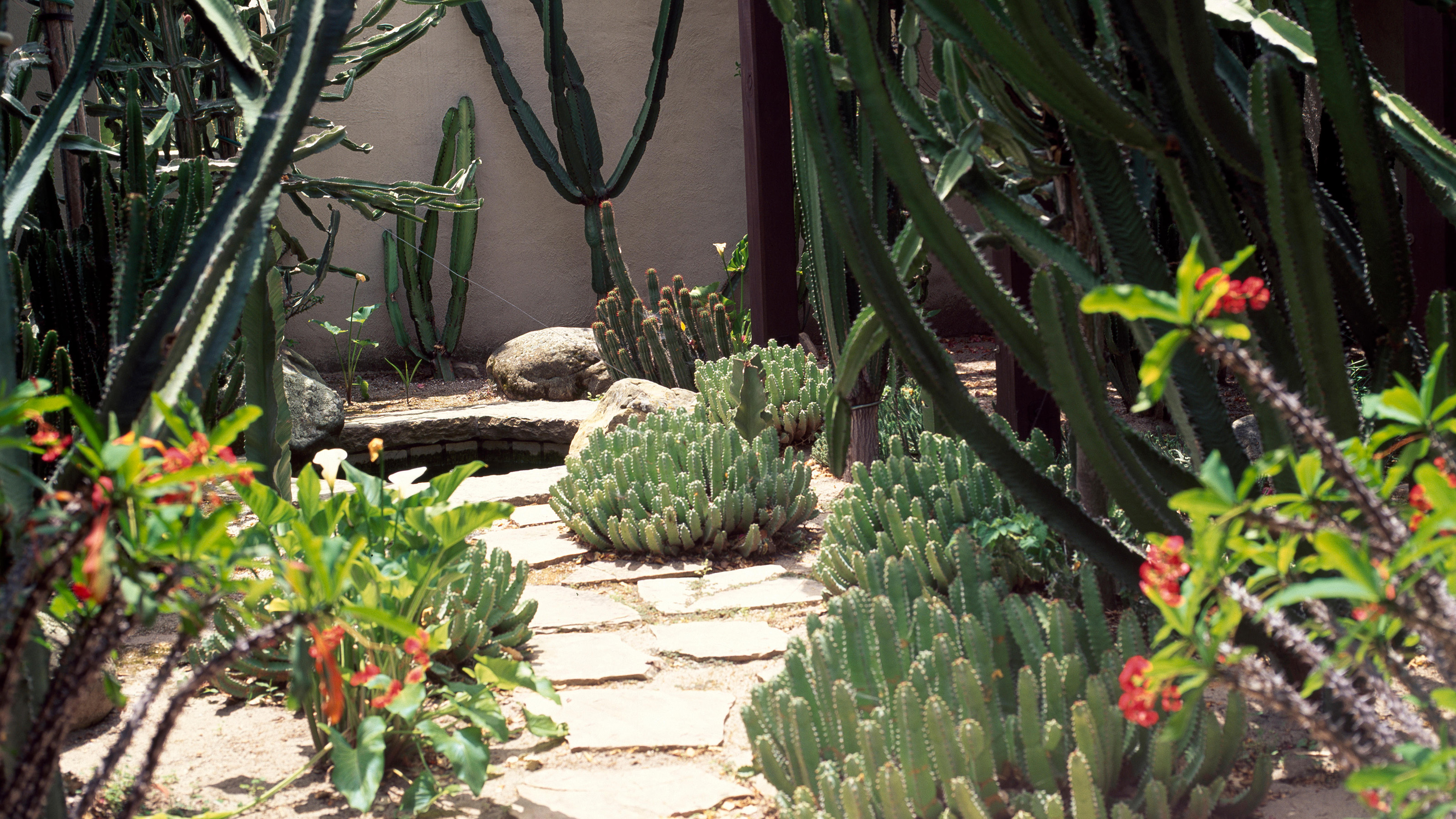
One thing's for sure, landscaping with cactus won't fail to bring a touch of character to your yard. And if planted in the right sunny, hot spot, they'll be low maintenance and drought-tolerant as well as bringing fabulous color and structure to your garden.
Cactus have more than enough variety for them to hold their own in planting made up exclusively of members of their own species. But they also look great combined with other drought-tolerant plants like succulents.
Some plants can form narrow columns which give height to planting. And there are those with more abstract shapes, like the famous prickly pear, which has the flattish pads that are fused together in a bonkers framework.
Aside from their architectural poses, many will also flower freely when they've established in a garden, giving bright pops of color. Cacti develop spines rather than leaves, which can be prickly to the touch, but there are those with spines that are barely noticeable or soft to the touch.
A number of species, however, have really dangerous, sharp long spines or barbs that are quite showy, because they are curved, hooked or even multi-colored. It's best to avoid these varieties if your landscaping ideas need to factor in children or pets.
Bring exciting shape and color to your plot by landscaping with cactus
Most cacti originate from hot, dry regions of South, Central and North America, so they are perfect for raising in sunny dry beds in backyards or as part of your front yard landscaping ideas. They will survive long periods of drought by storing water in their fleshy stems, so can be a good choice if you often experience hot, dry summers.
1. Add cacti to a curved bed along a path

Cactus are excellent low maintenance plants if they're grown in their optimum environment, meaning that you can be confident in their ability to give solid structure that won't let you down. So if you have an area where other plants have failed to deliver, then landscaping with cactus might be your answer.
Cacti are more than happy to spend all day in full sun where you might find other plants will shrivel under the heat, in fact as desert plants, this is exactly what they're built for.
Other plants might require regular watering to survive in such conditions, whereas a few choice cacti will sit happily alongside other drought tolerant plants, giving structure to your garden edging and pathways, season after season.
2. Mix with soft colored succulents for colorful landscaping
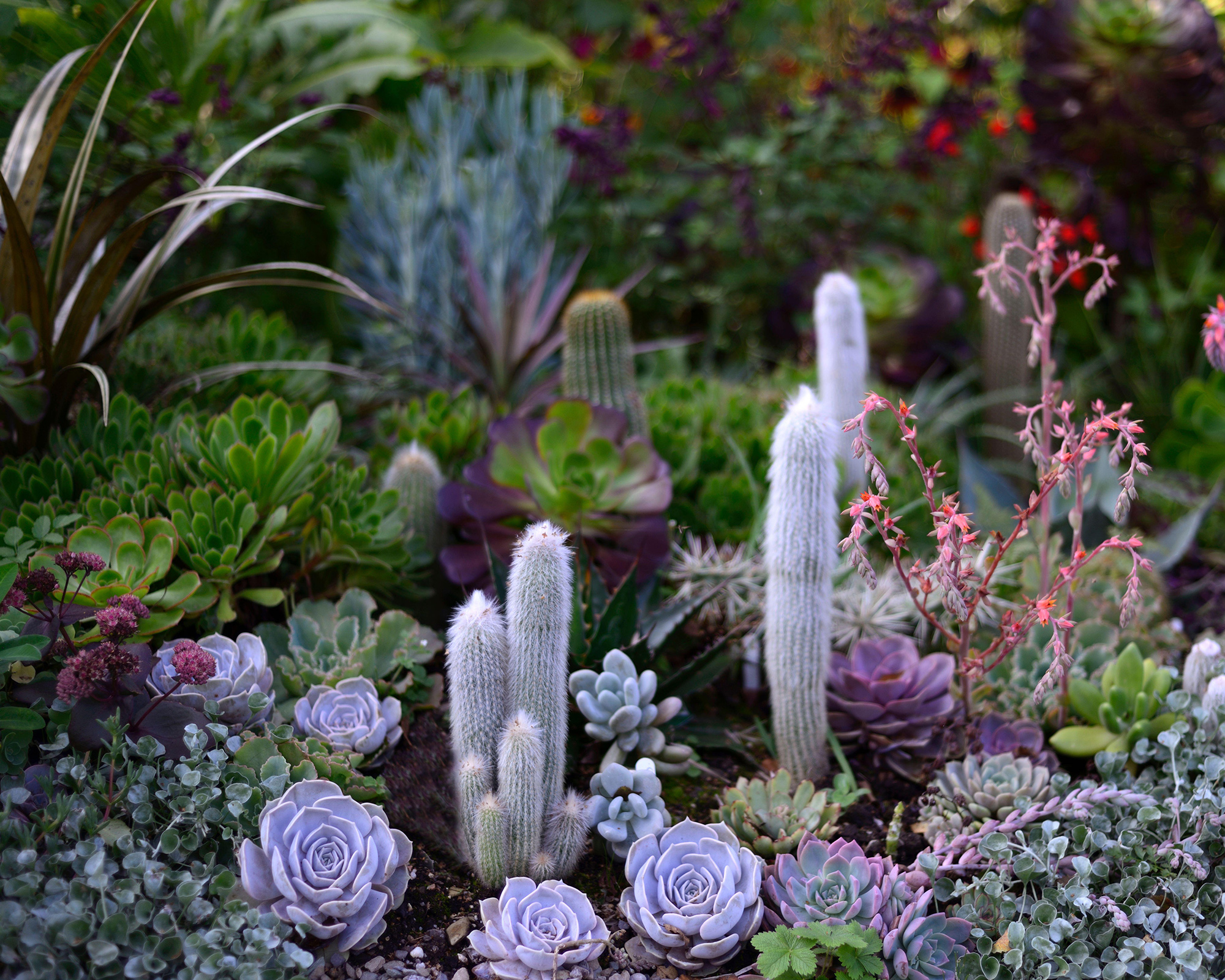
The soft pastels of Echeveria succulents and the delicate looking areoles of the Old Man cactus (cephalocereus senilis) have an almost dream-like quality when they're planted together in a succulent garden.
If you're wanting to give depth to your cactus garden ideas be sure to consider the background of planting too. Lighter colors will pop on a dark background, so think about working deep green foliage and black ornamental grasses into the back of your borders so the more delicate shades don't get lost.
There are plenty of suggestions for landscaping with grasses in our dedicated guide if you're searching for more inspiration.
3. Combine cacti in a stone trough
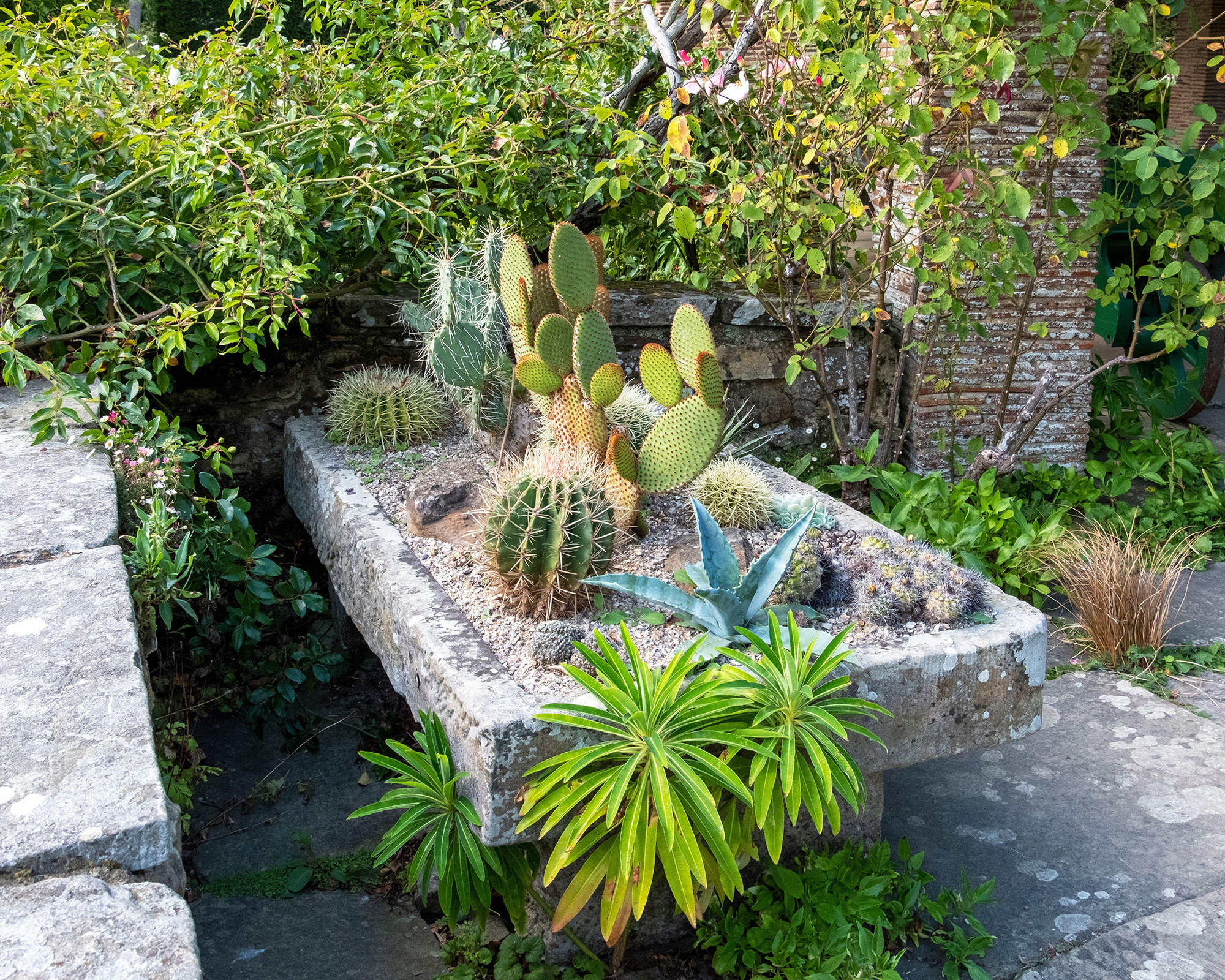
If you have a small yard, or simply an area within your space which lacks interest, then container gardening ideas are always a great option. Stone troughs lend themselves to landscaping with cactus as they will give your space a modern rock garden feel.
Whether you go for a rustic stone design or a sleek concrete container, just ensure that it works well with the rest of your garden scheme. And it's important to note that if you're raising your cacti in a container they will require occasional watering in dry spells to prevent them shrivelling up.
4. Plant cacti in curved raised beds
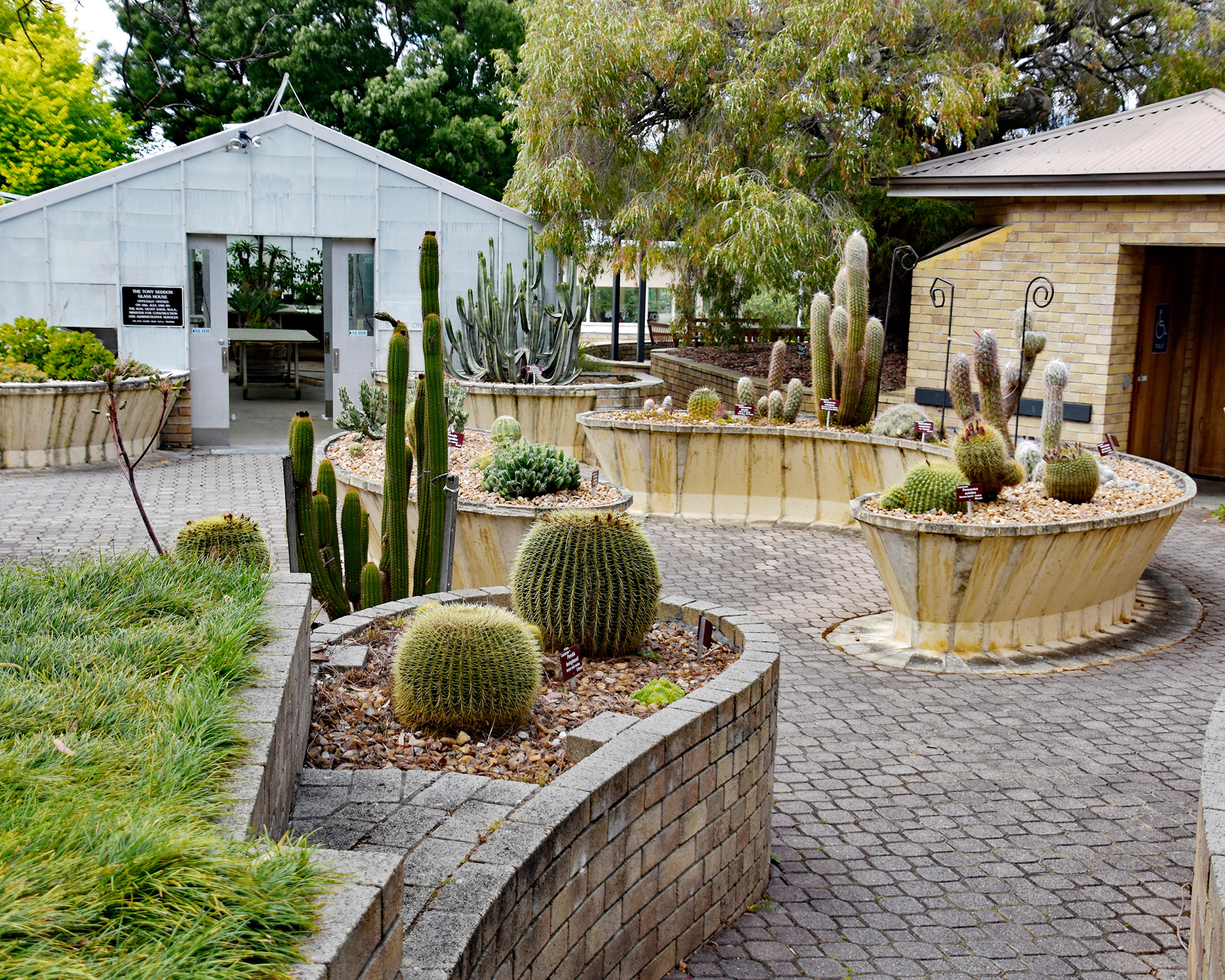
Curves can look great offset with more rigid architectural elements like cacti. A wavy sequence of raised garden beds will interact well with the upright shapes of the Senita cactus creating what is known as a curvilinear effect.
'Curves and straight lines work really well together, especially in tighter areas,' says garden designer Tabi Jackson Gee. 'The straight lines form the foundation and then the curves can be overlaid for a relaxed feel.'
Make sure that the compost in your raised bed has excellent drainage if you're planting cacti, so fill it with compost mixed with plenty of grit and horticultural sand.
5. Create shade around a secluded pool area
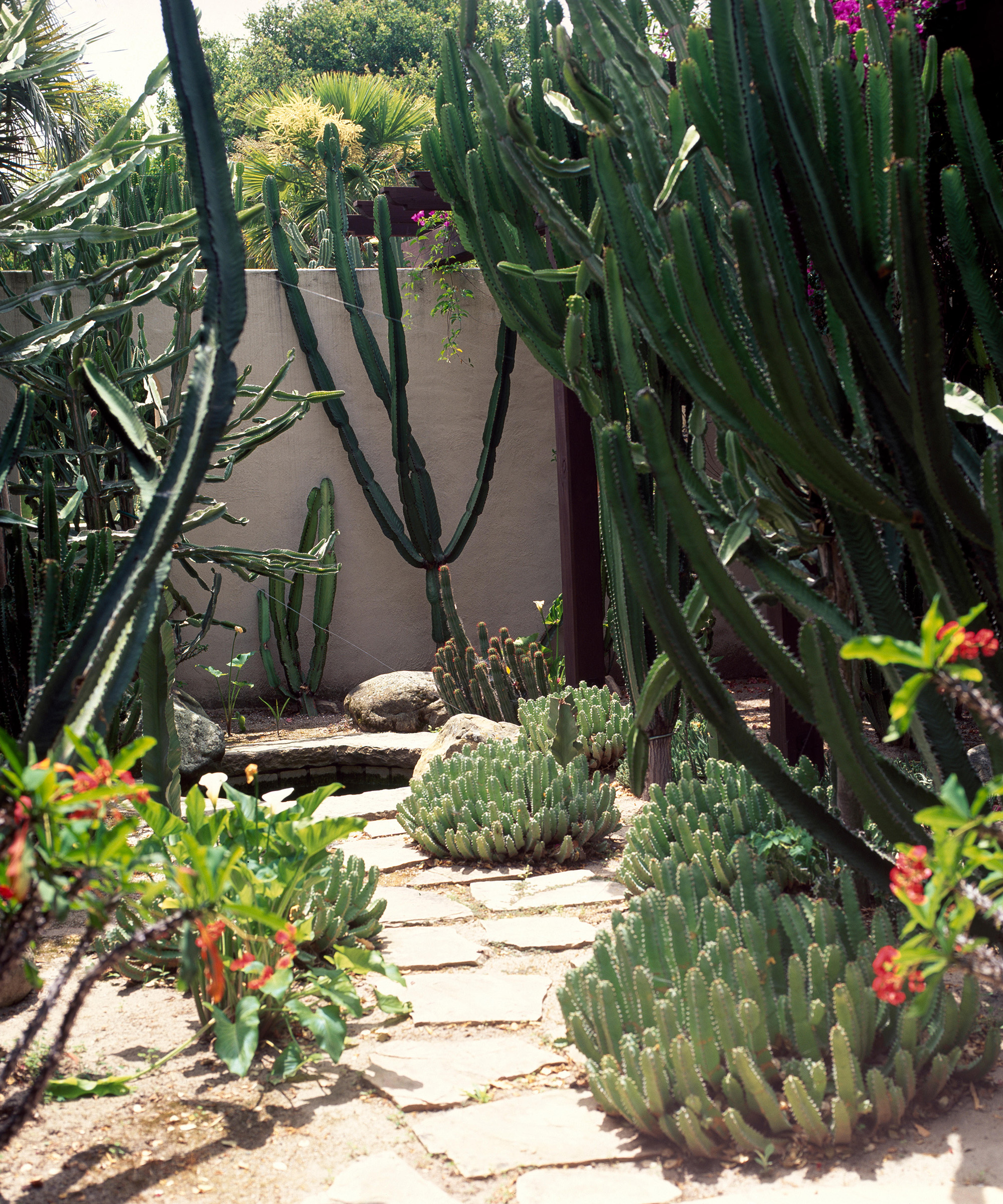
Landscaping with cactus makes sense in hot climates, such as areas which are right on the upper level of US Hardiness zones (between 9 and 10 is optimum). Though they will be associated with warm weather, cacti can also be utilized to create cool and shady areas in a garden space, especially when combined with low maintenance garden gravel ideas.
Candelabra cactus and Peruvian Apple cactus are among the varieties which should be planted to add height. When planted together they will stretch and spread to develop a dense collection of branches, transforming a scorching space into a shady oasis.
Landscaping with shrubs can be an equally effective way to create pockets of shade and privacy in a backyard.
6. Use cacti for a low maintenance front yard
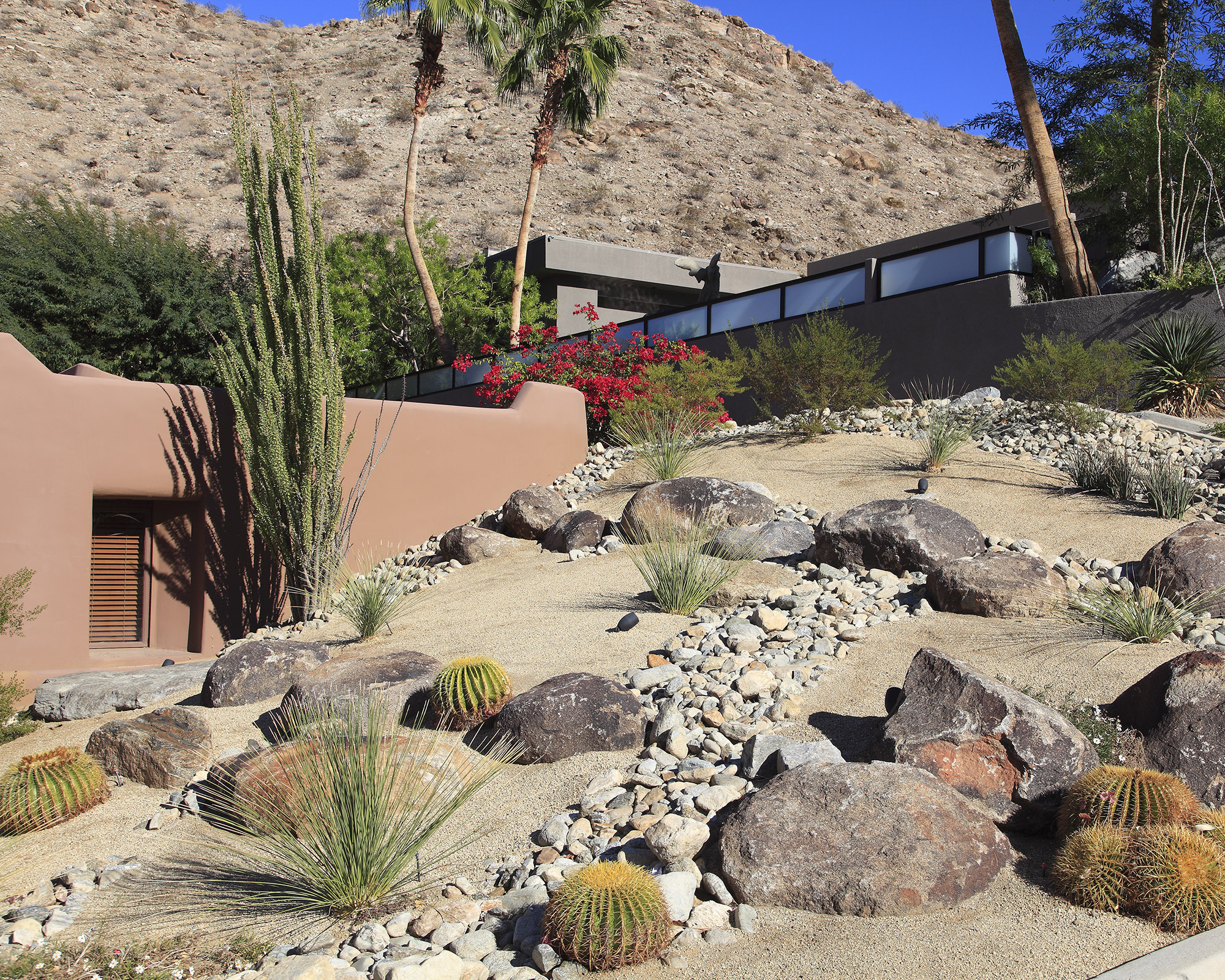
Front yards can be a bit of a daunting prospect if they're a big space to fill. South-facing spaces in dry areas will need plenty of irrigation if you're looking for lush, tropical planting, which is costly on your time and the environment.
Creating clever landscaping with cactus and cacti is the ideal solution for a low-maintenance, drought-tolerant space. Leave a good gap around your cacti to give them room to grow and develop. They may spread into dense clusters over time or simply grow as a solitary specimen.
Covering the rest of the ground with stones and boulders will give a more finished look to your planting scheme too. For a natural effect, incorporate some clever landscaping with river rocks as the smooth, weathered stones will help to pull the look together.
The real beauty of this low maintenance landscaping idea, however, is that you won't need to invest in as many plants to create a cohesive look.
7. Mix and match different cactus varieties
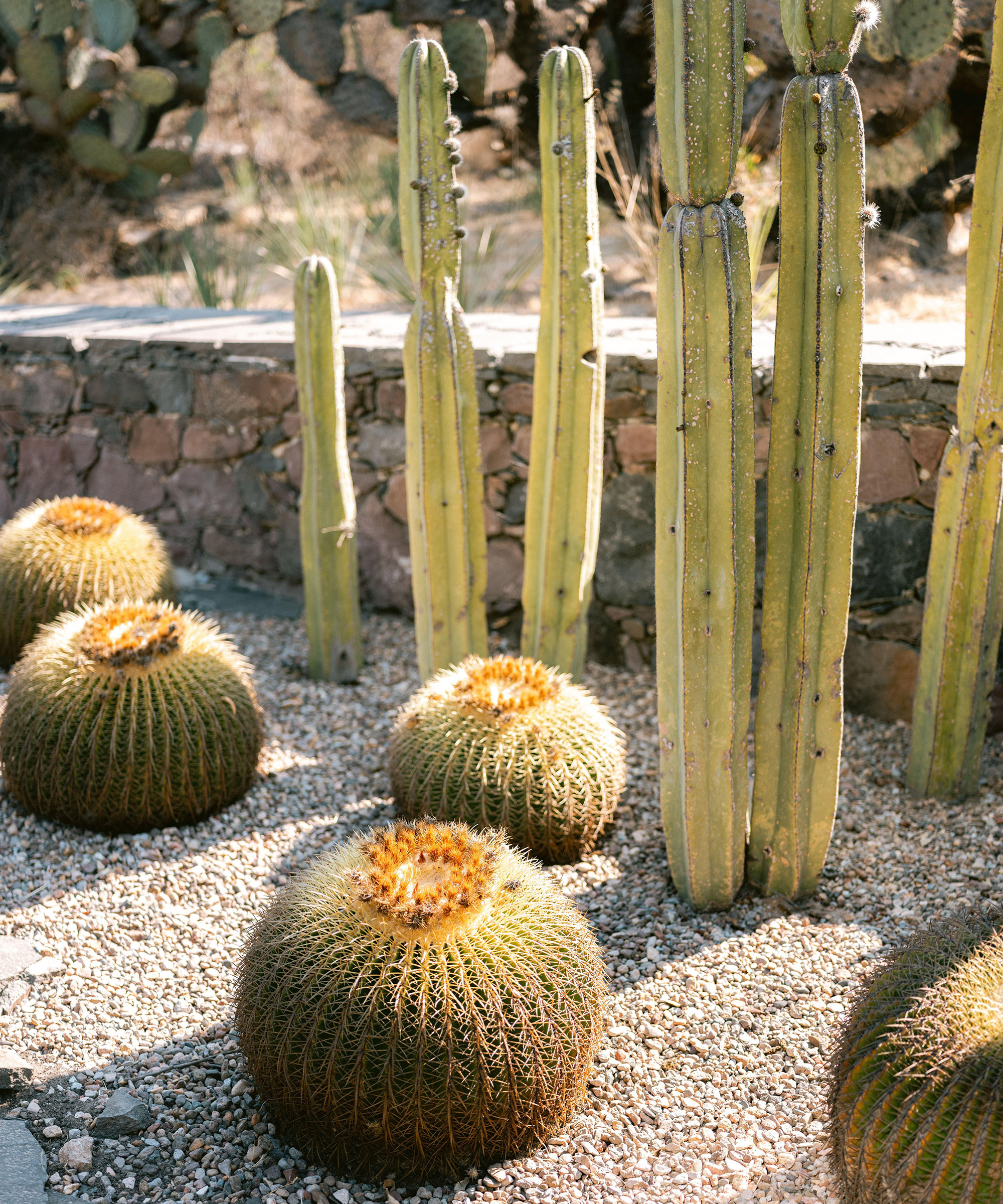
If you're planning to landscape with cacti and you're not sure where to start, simply select two different varieties and repeat them in your chosen area. It's the same process when landscaping with flowers where just using one type could lack a certain impact, but two varieties, particularly contrasting shapes and textures will bounce off each other and allow the other to pop.
Golden Barrel cactus will be a short squat shape and columnar forms like the Mexican Fence Post will be thin and tall. They will offset each other in a scheme nicely.
8. Use cacti for pool landscaping

Stenocereus marginatus cactus, also known as the organ cactus is an upright columnar variety which, given its narrow habit is ideal for lining a slim gap along a pool edge.
This simple pool landscaping idea will give interest to a plain painted wall at the end of your pool or water feature. Blush pinks, terracottas and orange tones are all the ideal background color for cacti, being reminiscent of desert skies. Erigeron, a low maintenance floriferous plant from the daisy family will soften the soil around the base of the cacti.
9. Use a single cactus for an artistic statement
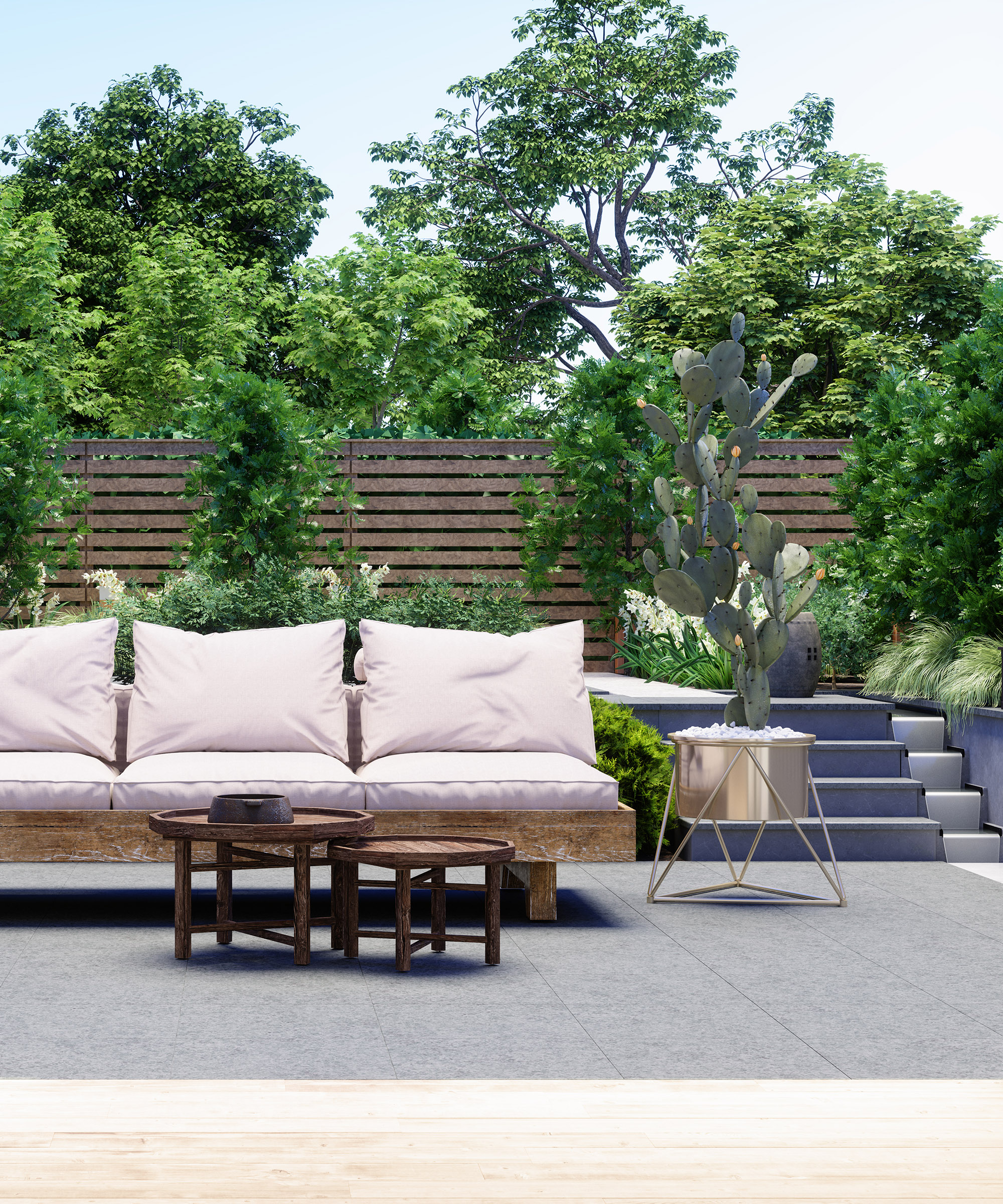
Few species in the plant kingdom can compete with the prickly pear cactus for its spectacular shape. It's cascading disk-shaped sections could rival an artistic sculpture. Another option to create a similar shape is the bunny ear cactus.
Given its incredible shape, a single specimen could work as a statement container plant, adding style and substance to a paved seating area.
Do bear in mind that cacti planted in small sized containers will need more regular watering than those in the ground as the soil will dry out more quickly. Something you'll need to consider if you're also using containers for landscaping with hydrangeas or landscaping with roses.

Teresa has worked as an Editor on a number of gardening magazines for three years now. So she is lucky enough to see and write about gardening across all sizes, budgets and abilities. She recently moved into her first home and the garden is a real project! Currently she is relishing planning her own design and planting schemes. What she is most passionate about when it comes to gardening are the positive effects it has on our mental health to grow and care for plants, as well as being great for the environment too and help provide food and shelter for wildlife.
